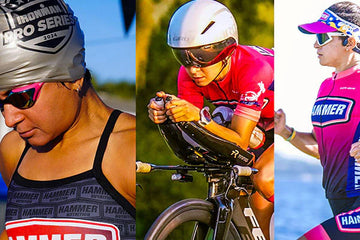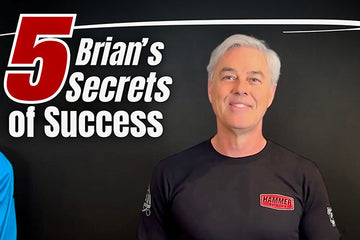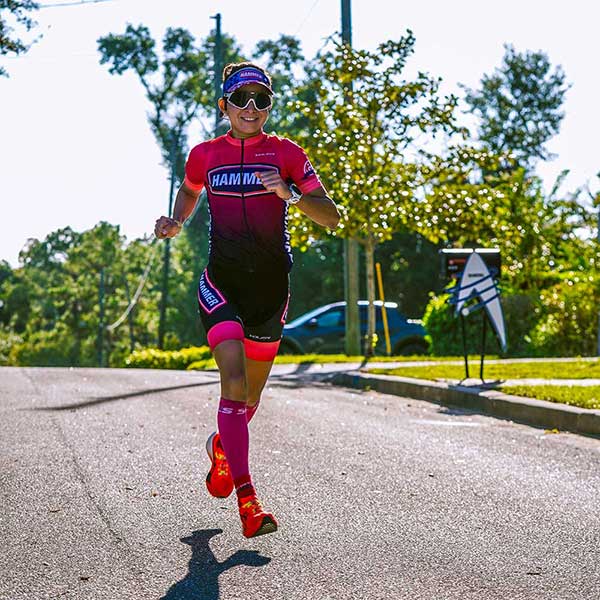
BY DR. BAYNE FRENCH
Sugar Refresher:
Lots of things are called "sugar". In my fighting days, they called me Sugar French. Later, I learned it was because people loved to fight me, but that’s not important.
Although my fighting record was not what I had hoped, it’s important to know that true sugar is sucrose. Sucrose is composed of a molecule of glucose bound to a molecule of fructose. After sugar ingestion (which hopefully occurs rarely), the enzyme protein sucrase cuts it in half. Glucose and fructose are then absorbed into the bloodstream.
Fructose occurs naturally in fruit, agave, honey, and some vegetables. Unprocessed fructose-containing foods have relatively low amounts; The fiber and phytonutrients within them cause the fructose to be absorbed into the blood slowly, which is favorable metabolically.
High fructose corn syrup (HFCS) is NOT naturally occurring. It is highly unfavorable. It is over 50% fructose and as high as 65%. It was developed in 1957 at Oklahoma State University. HFCS made it into our food in the 1970's. In 1984, both health-food companies Coca-Cola and Pepsi changed from sucrose to HFCS. I have endurance athletes in my practice who regularly drink these beverages. They have a gut, acne, bloat, fatty livers, and pre-diabetes.
HFCS is so biologically active and metabolism perturbing that finding evidence of Fatty Liver Disease in regular soda drinkers is almost predictable, including in endurance athletes.
The glucose piece of sugar elevates blood sugar, spiking insulin and driving the formation of fat. Over time, insulin elevation leads to insulin resistance and eventual Type 2 diabetes.
So, sugar (sucrose) has two weapons: glucose and fructose. Like me in my fighting days…run away and play dead.
Let Me Impress You With Other Big Words:
1) If I were a high-level endurance athlete, who I am, I would want to have heaps of nitric oxide (NO) in my body. NO does many favorable things and is generated in numerous tissues, including the heart, liver, and the inside lining of blood vessels.
Like most things human, the biochemistry of NO is vastly complicated. What is well understood is that it increases blood flow to tissues (vasodilates). It also facilitates the entry of glucose into muscle cells.
If I were going to run really far and fast or pack a 700-pound elk out of the mountains in pieces, I would like to have more blood getting to my muscles and more glucose entering those muscle cells. Wouldn't you?
You know where I'm going with this: sugar interferes with the formation of NO. As I said in my recent article on Uric Acid: "Why in the hell would you want to consume sugar with any regularity or EVER fuel with it?"
2) Many ultra-high level, Olympic caliber, freaky-good, scary strong, savage monsters like me know that your performance depends on your kidneys. Yep, those beans in each flank determine fluid and electrolyte balance. They are trained, just like your muscles and mind. Sugar, primarily through its fructose half, drives the formation of Antidiuretic hormone (ADH). ADH is a fascinating hormone (like all things human) made in the brain, then stored and released by the pituitary gland.
ADH is important for athletes. As its name implies, it interferes with diuresis (taking a leak). We thus hang onto the water, which is important in the setting of dehydration. ADH levels are usually elevated with heavy exertion, and hey, let's face it, nobody wants to stop and pee during a race, which is why I loved Obstacle Course Racing. You're already wet and muddy, which makes something else convenient.
Excessive ADH is a performance inhibitor causing excess fluid accumulation, which distorts one's "power-to-weight ratio." The more weight you pack around, the worse your power. ADH, unfortunately for athletic performance, also causes vasoconstriction. Recall that nitrous oxide is a vasodilator, enhancing blood flow to muscle. ADH reduces blood flow to muscle.
You know where I'm going with this: sugar drives the formation of ADH. Sugar directly causes more fluid accumulation and less blood flow to your muscles. Companies that promote sugar as an outstanding endurance fuel are either duplicitous or ignorant. And ignorance in a field in which you profess expertise is idiocy.
3) People always say, "I want to lose weight." Nope. What you want to do is burn fat. That’s more specific, right? "I want to run (bike, swim, etc.) faster ." Nope. What you want is to have your muscle cycle faster and longer without fatiguing. This is not semantics.
Meet Adenosine triphosphate, ATP. The chemical energy in this compound is converted to mechanical energy during muscle cell cycling. ATP is the absolute basic energy currency of our body. Its generation and subsequent utilization are paramount to optimal athletic performance. The mitochondria inside our cells make this compound.
You know where I'm going with this: below is an excerpt from my recent Uric Acid article,
"When we consume sugar, the enzyme fructokinase metabolizes the fructose piece. This process uses ATP. Douard et al (J of Phys. Jan 2013) showed that a cellular fructose load, as provided by sugar-sweetened beverages, causes ATP to reduce by 40-50%. Sugar impairs performance by depleting our primary energy currency. The notion that sugar is a good fuel source for endurance pursuits is deeply physiologically and biochemically flawed, and in essence, science shows the opposite is true."
Summary:
Outlined above are fundamental, biochemical reasons why sugar is antithetical to optimal athletic performance. It's antithetic to daily, non-athletic performance.
Sugar as a foundational business model compound needs to die off, and the sugar-producing/promoting companies and their philosophies should go away… it's as simple as that.
To enact a durable and real change, it must occur on an individual level. Meaning YOU do things differently. Educate yourselves, align with what makes sense to you, associate with whom you feel is operating in an authentic way, then go kick ass.










25 comments
Having just completed (and winning male 70+ AG) the 12 hr World Championship TT in Borrego Springs, CA., I have the following question. Some of the top endurance athletes were observed taking high sugar drinks on a regular basis and seemed to thrive on the intake in the latter stages of the race. Conversely, while following the ‘less is more’ protocol and strict caloric intake for the entire twelve hours, I question whether I could have finished a little stronger in the latter stages of the race. Pushing a seventy five year old machine in the desert heat for twelve hours is not recommended for the occational bicycle rider, but sometimes I just have to question whether I’m missing something. Please comment.
———
Hammer Nutrition replied:
First, please accept our congratulations on winning the 70+ Age Group division in the recent 12-hour World Championship TT. You had a great race, Ralph, and you must have been doing something right fueling-wise, as you beat the other 3 athletes in your age group, as well as accumulating more miles over the 12-hour period than many of the athletes in ALL of the age groups.
We do not advocate the use of high sugar drinks, “sugar” being defined as a one- or two-chain molecule (e.g., glucose, sucrose, fructose, etc). Instead, we use a starch-like complex carbohydrate, maltodextrin, for three primary reasons:
1) Maltodextrin goes to work extremely quickly in producing energy because it’s a high Glycemic Index carbohydrate; in fact, it’s the same as pure glucose (both are 100). That’s a good thing because you want that energy as quickly as possible, and that’s what maltodextrin will do.
2) Because it’s comprised of hundreds of saccharide molecules all weakly bonded together, maltodextrin will provide a much more consistent and longer-lasting energy than glucose or any other simple sugar, and without that undesirable “peak and valley”, “flash and crash” energy that is typical with simple sugars.
3) You can digest greater amounts of calories from maltodextrin than from any short-chain sugar, aka “simple sugar,” such as glucose, sucrose, and fructose (As one nutritional scientist states, “maltodextrin allows one to swallow more energy in less volume.”) With maltodextrin you get the full amount of calories that you need for energy production, and with no delay in exiting the GI tract. Fuels containing simple sugars much be mixed at very calorically weak solutions in order to be digested with any efficiency, so your body won’t be getting the right amount of calories it needs. However, when athletes try to make a “double-strength” mix of a simple sugar fuel, that too-high sugar mixture does not match body fluid chemistry, which means it just sits in the stomach undigested for a lengthy period of time… and that means severe stomach distress. You won’t have that issue with maltodextrin.
One of the primary reasons for our lower calorie recommendation is because it eliminates stomach issues from occurring, especially compared to the athlete who is trying to replenish calories burned with equal to near-equal amounts of calories from their fuel. Fueling under the premise of “what is the least amount of calories I need to keep my energy levels where I want them to be hour after hour?” not only eliminates stomach distress issues from occurring, it allows the body to use the vast amounts of calories from fatty acid stores as a fuel source much more efficiently. The athlete who is replacing “X” (calories burned) with “X” or “near-X” back in essentially negates his body’s ability to burn fat as a fuel source with much, if any, efficiency. Lastly, it’s important to keep in mind that fueling under the “what’s the least amount of calories I need” recommendation allows you more flexibility with your intake, meaning that you can most definitely consume a few more calories on occasion if you find it to be necessary, and you can do that with confidence, knowing that you won’t be putting yourself at risk for a whole host of stomach/performance-ruining issues, courtesy of consuming excess amounts of calories. Remember, you can easily and quickly fix a “slightly not enough problem.” On the other hand, trying to resolve an “uh-oh, I consumed too much and now my stomach is rebelling” problem is much harder and far less pleasant to resolve… if it can be resolved at all.
What do you think of drinking some chocolate milk after exercise ?
thanks.
———
Hammer Nutrition replied:
While there are arguably worse things that one could consume post-exercise, chocolate milk—especially its protein component—cannot compare to the whey protein isolate we use in Recoverite. No matter which standard is used to determine protein quality and bioavailability—Biological Value (BV), Protein Efficiency Ratio (PER), Protein Digestibility Corrected Amino Acid Score (PDCAAS)—whey protein isolate comes out on top of all protein sources, including milk. One standard of measurement, Biological Value (BV), is a standard that, in simplest terms, measures how well the body absorbs a protein and how much of that protein actually gets used by the body. Whey protein has no peer when it comes to BV, with its rating of ~140 (some sources rank it as high as 159). While you do get some protein from chocolate milk, over 80% of it is in the form of casein, with the remainder in the form of whey. Based solely on its bioavailability, casein is a poor protein source for recovery, with a mediocre Biological Value (BV) rating of 77. For more information on casein, please see the article “Casein: A Quality Protein Choice?” on page 35 in Endurance News #57 (https://cdn.shopify.com/s/files/1/0617/9192/8555/files/ENissue57.pdf).
Of all proteins, whey protein isolate is the richest source of all nine of the essential amino acids— histidine, isoleucine, leucine, lysine, methionine, phenylalanine, threonine, tryptophan, and valine—which are the ones that are not synthesized by the body and thus must be provided from outside sources. Included in these nine essential amino acids are the three branched-chain amino acids (BCAA)—leucine, isoleucine, and valine—that are the primary ones involved in many recovery-specific processes.
The biggest issue with chocolate milk, however, is the amount of sugar it contains. Much of it is the naturally occurring simple sugar lactose, and, depending on the brand, 50% or more of the total sugar content is added sugars—nearly all sucrose, but oftentimes high fructose corn syrup. Recoverite is free of lactose and contains no refined/simple sugars, only complex carbohydrates for rapid absorption and conversion to glycogen for muscle cell fuel restoration.
While consuming chocolate milk is better than nothing, it is not the “state of the art” recovery drink that it’s been promoted to be. Our position is that to get the full value out of all the time and energy you put into your training, you MUST put the highest quality fuel back into your body. Because recovery is such a key component of athletic performance, you simply can’t cut corners, and when you compare the nutrition in chocolate milk to that of Recoverite, it’s abundantly clear that the whey protein isolate/complex carbohydrates makeup of Recoverite is clearly superior.
I do avoid sugar in general but then I crave chocolate cookies and chocolate cake. I do my best to resist but then i break down and go out and buy either and eat it. After a day or two my cravings die down and I go back to a low sugar intake. How do I avoid these sugar binges?
———
Hammer Nutrition replied:
Giving in to a chocolate/sugar craving once in a while should not be terribly problematic… life’s too short to not enjoy the occasional treat, if it, of course, really is “occasional” and not frequent. The trace mineral chromium, ideally in the polynicotinate form as it is the most bioavailable form (trademarked name ChromeMate™), is suggested to be very helpful in reducing sugar cravings. By helping to improve cellular uptake of glucose, ChromeMate reduces the amount of insulin needed to process sugar or carbohydrates from a meal. Reduced insulin levels help to prevent blood sugar from dropping too low, which would cause sugar cravings. Magnesium works in tandem with chromium, and the two make up a “powerful pair” to protect against insulin resistance (see https://hammernutrition.com/blogs/endurance-news-weekly/a-powerful-pair-for-insulin-resistance for more). Taking 1 Chromemate (https://hammernutrition.com/collections/supplements/products/chromemate) capsule and 1-2 Essential Mg (https://hammernutrition.com/collections/supplements/products/essential-mg) capsules prior to or with your main meals, and also prior to giving in to a sugar craving should prove to be very helpful in managing insulin function and also in reducing sugar cravings.
Any thoughts on Sukre or Onosweet?
Your articles are great.
———
Hammer Nutrition replied:
I think the jury is still out on sukre, simply because, even after a fairly exhaustive search, there’s little-to-no information regarding what the source material is or how it’s produced. Information from a couple of sites simply describe it: … “as a ‘special sugar’ that can ‘help support healthy blood sugar levels.’ Sukre works by attaching to sugar in your blood, slowing the absorption of sugar. Sukre manipulates the movement of glucose, forcing it out of the bloodstream and into your small intestine.” If that’s the case, and if I am understanding that statement correctly, I’m not sure that would be an ideal ingredient for a sports fuel, because you want glucose in the bloodstream to be used as a fuel source, not to go back to the intestines where it originated before going into the bloodstream… i.e., “The stomach and small intestines absorb the glucose and then release it into the bloodstream. Once in the bloodstream, glucose can be used immediately for energy or stored in our bodies, to be used later.” (reference: https://healthy.kaiserpermanente.org/colorado/health-wellness/healtharticle.how-our-bodies-turn-food-into-energy). OnoSweet™ is patented Reb M (rebaudioside M one of many steviol glycosides found in the leaves of the Stevia rebaudiana plant) that does not come from the stevia plant, but rather is fermented from the sugarcane plant. It appears that the properties of stevia and OnoSweet™ are similar-to-identical, with the primary “selling point” for OnoSweet™ being that it is from a more sustainable source.
Enjoying your posts!